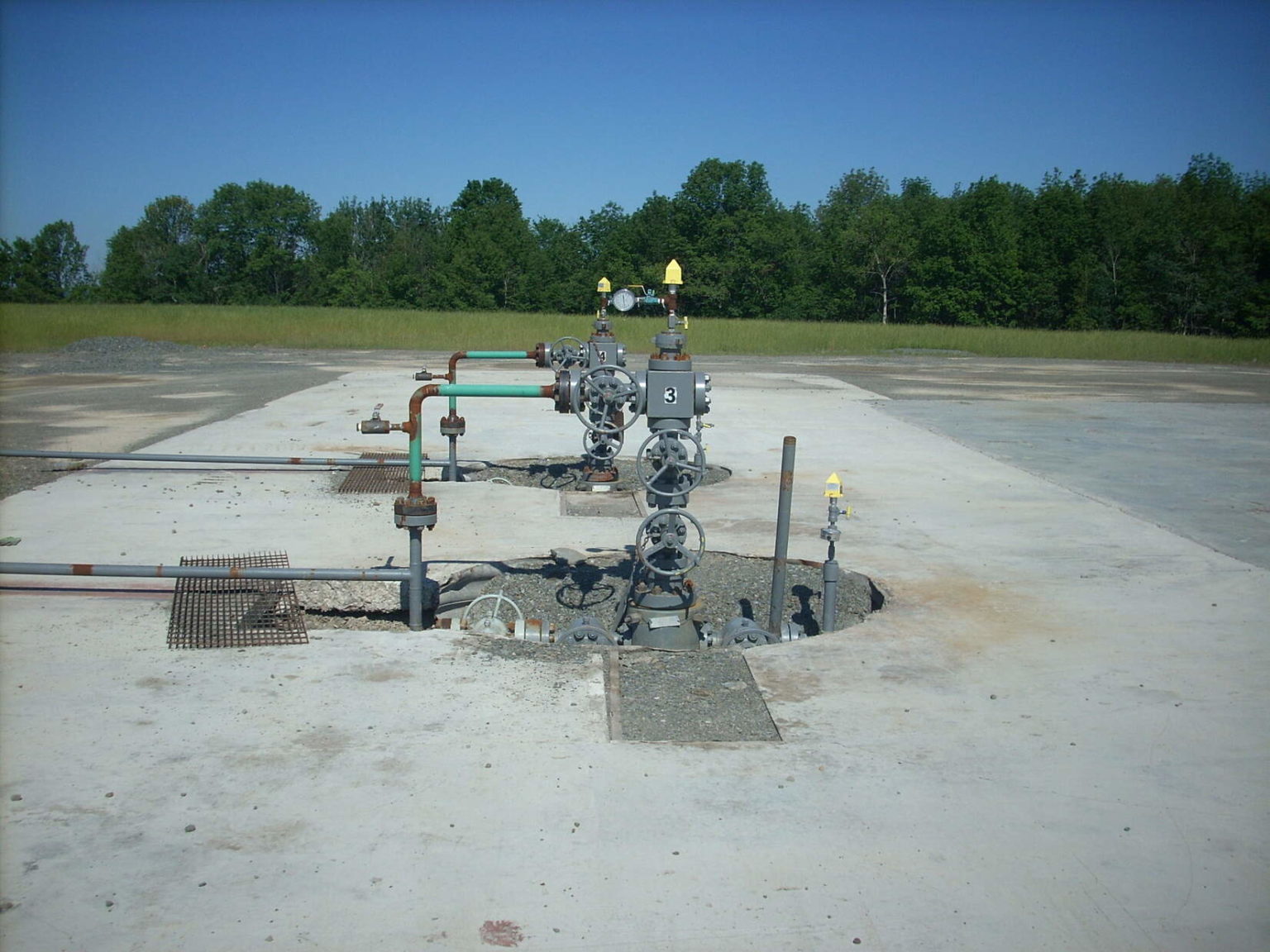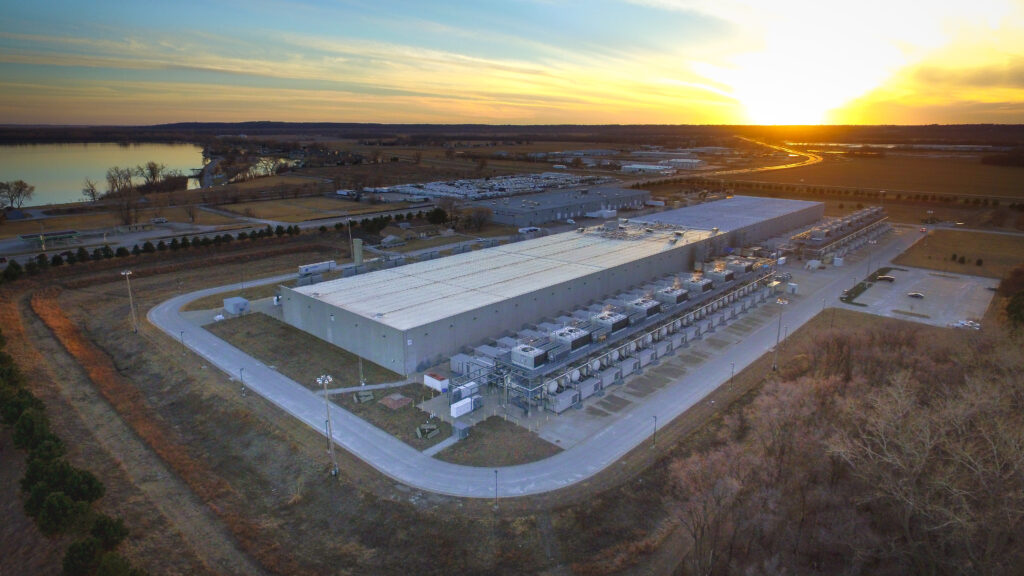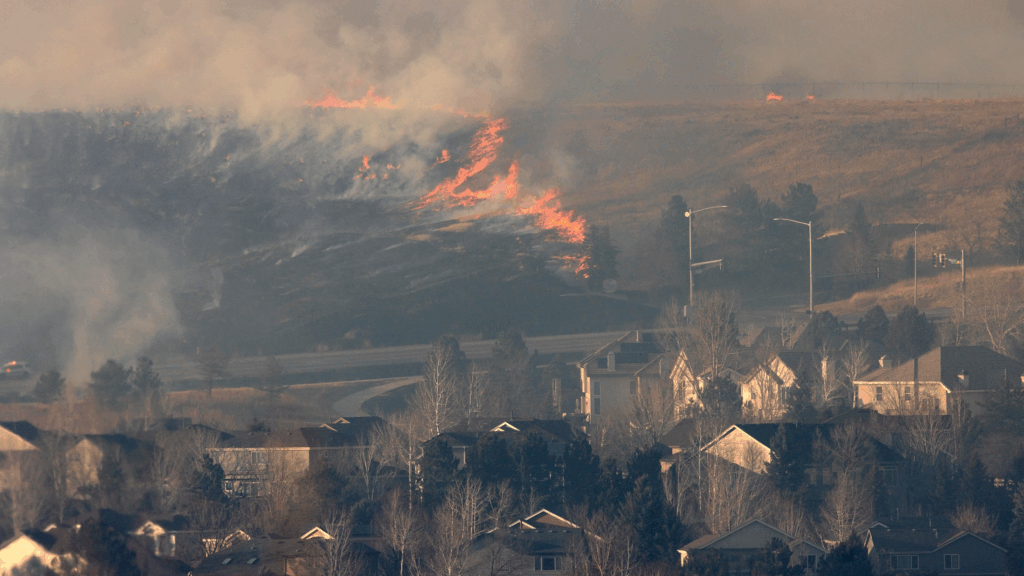A groundbreaking four-part report by Environmental Health News (EHN) offers new scientific evidence that living near oil and gas development can expose people to a wide array of hazardous and carcinogenic chemicals — not just those living near shale drilling and fracking, but also those living near older conventional oil and gas wells.
The two-year EHN investigation sought to fill in a gap in the scientific understanding of fracking and chemical exposures by undertaking some research themselves, under the guidance of scientific advisors and with approval from an Independent Review Board. They collected air, water, and urine samples from five Pennsylvania families and sent the samples off to researchers at the University of Missouri for analysis. Those tested also wore personal air monitors for up to eight hours on most days samples were collected. The testing cost the publication an average of $12,000 per family, reporter Kristina Marusic said. Researchers also collected data about the families’ activities and other potential sources of chemical exposure before and during the sampling.
The researchers discovered striking levels of chemicals associated with oil and gas and their “biomarkers,” substances produced when the body processes chemicals — like mandelic acid, which can be evidence of exposure to ethylbenzene or styrene, or hippuric acid, a biomarker for toluene. The compounds they found biomarkers for, which also included benzene, can cause irritation of the skin, nose, and eyes, central nervous system problems, and liver and kidney damage; some are also carcinogens.
“We were pretty shocked at some of these really high levels of these biomarkers in kids,” Marusic told Allegheny Front, adding that she was also surprised to see that some of the highest readings were also found in people who lived further away from shale wells but close to conventional oil wells.
That said, the investigative reporting was intended to be a pilot project, she added, not proof that that the chemicals found pose a threat to people’s health. “A lot of times the purpose of a pilot study is to say, ‘Hey, I think there might be something here. We should really look into this further,” she said.
“This investigation represents the first comprehensive body burden analysis of residents living in areas targeted by fracking,” Dr. Sandra Steingraber of Concerned Health Professionals of New York, which publishes a compendium of research into the “risks and harms” associated with unconventional oil and gas, said in a statement. “As such, it fills an important data gap and strongly suggests that the toxic emissions from fracking operations are entering the bodies of nearby residents at levels known to cause harm.”
‘A Good Place that Had Clean Air’
For much of the 20th century, the Pittsburgh region was crowded with mines and notorious for its smoke-clogged air, dubbed “hell with the lid off” — the by-product of the coal and steel that defined the region and its economy. Black-and-white photos from the 1940’s, before federal environmental laws were enacted, show plumes of black smoke and air so thick with particulates that the sun appears obscured and it’s not possible to see further than a few blocks down Pittsburgh’s crowded streets.
But it’s been decades since the heyday of the mills and the mines. While coal-related pollution certainly persists, the dense smoke has largely lifted from the region.
In photos accompanying EHN’s series, the skies are bright blue, the air looks clear, and lawns, fields, and forests surrounding homes are a lush green.
“Trafford seemed to be a good place that had clean air,” Ryan Graber told EHN, describing how he and his wife Gillian chose Trafford, a small town (population: 3,039) 17 miles east of Pittsburgh, as their family relocated from a suburb closer to the city. They chose Trafford, Graber added, after considering a different house outside Pittsburgh, but which was located too close to a coal-fired power plant.
But — unlike dense smoke from coal and steel plants — many of the pollutants associated with natural gas development cannot be seen without special tools and while borders may define a government’s authority, nature follows its own rules.
While EHN notes there has been no fracking inside Trafford’s borders, it also found that the closest fracked well was just seven miles away from the Graber family home. There’s also the nearby Clairton Coke Works and, EHN found, at least 100 conventional oil and gas wells that were drilled within five miles of the Graber and LeCuyer homes.
EHN‘s testing revealed evidence that oil- and gas-associated chemicals have found their way into the Graber family, as well as the family of Ann LeCuyer, who lives about two miles away. Trafford, which spans Allegheny and Westmoreland counties, is also located near Washington County, which by 2018 had become the state’s most heavily-fracked county, home to over 1,600 shale wells.
“While many of the most shocking outliers from our project occurred within the families that are surrounded by fracking infrastructure within two miles of their homes in Washington County, we were surprised by what we found in Ann and Gillian’s families,” EHN wrote.
Urine samples collected from four families over a four-week period revealed evidence of numerous chemicals, including benzene, toluene, naphthalene, xylenes, and other lesser-known compounds that EHN wrote are “linked to negative health impacts including respiratory and gastrointestinal problems, skin and eye irritation, organ damage, reproductive harm, and increased cancer risk.”
While some of those tested by EHN were in apparent good health, at least two children reported unusual nose bleeds, one reported mysterious sores after bathing, and one also reported “rashes, nose bleeds, joint pain and stiffness, vomiting, and migraines.”
The EHN report does not assert that the families’ health complaints are caused by the chemical exposures, which is a much more complex question to answer. It also notes that, given gaps in the research and a lack of government safety standards, not much is known about whether some of the chemicals found pose significant health hazards. But it does warn that some of the chemicals found are also known carcinogens.
“Pennsylvania is the fourth-largest greenhouse gas emitter in the U.S.,” EHN wrote. “It’s not a coincidence that the state also has the third highest cancer incidence rate of all U.S. states. Approximately half of all Pennsylvanians will be diagnosed with cancer at some point in their lifetime, and roughly one in five Pennsylvanians dies of cancer.”
“We don’t seem to be able to get away from this,” another EHN study participant, Jane Worthington said. Worthington’s granddaughter Lexy seems to be particularly sensitive to benzene exposures, in EHN’s recounting, and Worthington had moved the family to another school district after suspecting that Lexy’s health was being harmed by fumes from a shale well just a half-mile away from her school. But their new home, the family soon learned, sat within 1.5 miles of six other shale wells and a metal casting site.
“All of the family’s samples exceeded the U.S. 95th percentile for mandelic acid, a biomarker for ethylbenzene and styrene,” EHN found. “More than half of the family’s samples exceeded the U.S. 95th percentile for phenylglyoxylic acid, another biomarker for ethylbenzene and styrene, and for trans, trans-muconic acid, a biomarker for benzene. A third of the family’s samples exceeded the 95th percentile for hippuric acid, a biomarker for toluene.”
The research is also notable because it focused so heavily on children’s exposure, the report’s methodology segment notes. “Typically children haven’t engaged in any of the lifestyle behaviors that often lead to adults having high levels of unwanted chemicals in their bodies—smoking, drinking, varnishing floors, driving heavy machinery—so, in general, looking at children provides a clearer view of potential environmental exposures.”
A Medical Mystery
Back in May, 2019, long before the Covid-19 pandemic emerged, reporters David Templeton and Don Hopey at the Pittsburgh Post-Gazette published an investigation into a public health mystery — one that continues to perplex experts. They tracked 27 cases of a cancer so rare that it affects just one in a million Americans to the four-country region surrounding Pittsburgh, whose population combined is just 750,000.
A March 2, 2021 New Yorker article by Pulitzer-winning Eliza Griswold brought new national attention to those sickened by the rare cancer, Ewing’s sarcoma, profiling both those who died from the disease and the impacts on their survivors.
It’s not yet clear whether there’s a link between the Ewing’s sarcoma cases in the region — it’s entirely possible, experts warn, that what looks like a pattern is simply the byproduct of random chance.
But some medical experts suspect a link to the shale gas rush in the region, which, for example, unleashed a torrent of wastewater carrying, among other things, the radioactive element radium, primarily two isotopes: radium-226 and radium 228.
“Health effects associated with the ingestion of Ra[dium]-226 include bone sarcoma,” a 1991 Brookhaven National Laboratory study quoted by Griswold found.
A few years after the first cases of Ewing’s sarcoma in the region began to be reported, the New York Times found that Pennsylvania’s shale wells had already produced 1.3 billion gallons of wastewater and that most of the water was shipped to treatment plants that could not remove toxic or radioactive materials known to be present in the waste.
“Of more than 179 wells producing wastewater with high levels of radiation, at least 116 reported levels of radium or other radioactive materials 100 times as high as the levels set by federal drinking-water standards,” the Times wrote in February 2011. “At least 15 wells produced wastewater carrying more than 1,000 times the amount of radioactive elements considered acceptable.”
Meanwhile, none of the state’s drinking water intakes downstream from the plants that accepted that waste — plants that were not designed to remove radioactive materials — had tested for radium for several years, the Times found.
Last year, a major Rolling Stone investigation into fracking and radioactivity (by Justin Nobel, who has also reported for DeSmog), found that workers handling shale gas waste may have been placed at risk by their exposure to waste, which they handled with little oversight from state or federal authorities.
Pennsylvania now plans to spend roughly $3 million on two studies of fracking, to be conducted by the University of Pittsburgh — but it’s not yet clear, Griswold notes, whether the study will include fracking waste. A representative from the state’s Department of Health also told Griswold that the study would not include a specific look at the hazards posed by the industry’s radioactive waste.
Drilling Slowly Returns?
While the Covid-19 pandemic proved deeply bruising for the oil and gas industry, there are signs that drilling may be re-emerging in Pennsylvania.
Drilling activity in the region still remains both below its pre-pandemic levels and very far below the frenzied peaks reached about a decade ago, but rigs have been slowly migrating back in recent months, with figures from Baker Hughes Co., which publishes rig counts, showing the number of Marcellus rigs inching gradually up since September 2020, when just 24 drilling rigs could be found in the region. That’s compared to 38 a year earlier, before the Covid-19 pandemic drove much of the U.S. into lockdowns. At the end of February, Baker Hughes reported 31 drilling rigs in the Marcellus.
Drilling rates across the rest of the US have fallen far more severely over the past year, Baker Hughes data shows, making the Marcellus an outlier.
Two controversial Marcellus pipeline projects, intended to feed petrochemical projects, are also newly being placed into service. On Monday, March 1, Energy Transfer’s Revolution pipeline, which exploded in a fiery blast on September 10, 2018, began flowing once again, following two years of continued construction set backs and difficulties that forced the pipeline to be partially re-routed, the Pittsburgh Post-Gazette reports. The 2018 blast remains under investigation by the U.S. Department of Justice and by Pennsylvania’s attorney general. Separately, Energy Transfer was fined $497,000 for failing to report spills and other construction problems with its troubled Mariner East projects — problems so persistent that, NPR’s State Impact reports that state regulators convened an October conference with the driller to find out if the company “could not or would not comply with permits and regulations.”
Residents near the site of the Revolution blast were told that another pipeline that now runs nearby, the Falcon pipeline, would begin carrying gas “after Feb. 28,” the Post-Gazette noted. Shell, like other pipeline builders in the region, had encountered significant construction difficulties, particularly in locations that the environmental group Fracktracker found were on top of known abandoned coal mines.
Meanwhile, a report in mid-February by the Johnstown, Pennsylvania-based Ohio River Valley Institute raised new questions about whether the past decade’s rush drilling had delivered on the economic benefits promised early on. While an enormous amount of oil and gas has been produced using fracking, the new report raises questions about what the cumulative impacts of the drilling rush were on local economies — and specifically on job creation.
Mental health is the focus of part three of EHN‘s series; those living near fracking can experience chronic stress and depression. “Proponents of the industry’s economic benefits are quick to point out that being jobless also impacts people’s mental health,” Marusic acknowledged.
And the new findings of the Ohio River Vallye Institute report seem to throw some common assumptions about the industry’s net job creation in heavily drilled areas in Appalachia into doubt. The analysis found, for example, that while the number of jobs nationwide grew 9.9 percent, heavily fracked counties in Pennsylvania, Ohio and West Virginia saw jobs grow by just 1.6 percent.
“This report explodes in a fireball of numbers the claims that the gas industry would bring prosperity to Pennsylvania, Ohio or West Virginia,” former Pennsylvania Department of Environmental Protection chief John Hanger said in a statement accompanying the report. “These are stubborn facts that indicate gas drilling has done the opposite in most of the top drilling counties.”
The American Petroleum Institute labeled those findings misleading. “While some groups may be focused on pushing their own agendas, our industry is focused on advancing solutions for a cleaner future, delivering affordable, reliable energy and powering the nation’s economic recovery,” a spokesperson told Inside Climate News.
The economic findings were nonetheless among the many factors cited by the Philadelphia Inquirer’s editorial board, which on February 21 called on the state to move away from fossil fuel production.
“Pennsylvania is the home of the first oil well drilled in U.S. history,” the Inquirer wrote. “The commonwealth has a long relationship with extractive industry, but it is an abusive one. It is time to start planning a divorce.”
As concerns about the economic and health impacts of the shale rush continue to swirl, there are some signs that the political tides may be shifting further away from fracking in Pennsylvania.
Also in late February, the Delaware River Basin Commission voted to establish a fracking ban in the Delaware River basin, which passes through Philadelphia and touches four states, including New Jersey, Delaware and New York as well as Pennsylvania. The river basin has long maintained a de facto moratorium on shale gas extraction — but with the Commission’s February 25 vote, a slice of Pennsylvania became officially off limits for shale gas extraction.
All four states voted in favor of the ban, while federal representative on the commission abstained.
A federal lawsuit, filed by Pennsylvania Republican state senators Gene Yaw and Lisa Baker and challenging the authority of the commission to regulate gas drilling, remains ongoing.
Main Image: Marcellus gas wells in central Pennsyvlania in July, 2011, Photo Credit: Gary Dincher, via Flickr.Subscribe to our newsletter
Stay up to date with DeSmog news and alerts






